Knoxville, TN Pollen and Allergy Report for Summer 2023
Pollen Allergy Trends in Knoxville, TN
When is pollen lowest in Knoxville, TN?

February
Lowest month total PPM
Avg. PPM
When is pollen highest in Knoxville, TN?

April
Highest month total PPM
Avg. PPM
How does pollen in Knoxville, TN compare to Tennessee?
Knoxville has a higher average PPM than the state of Tennessee.
Knoxville yearly avg PPM:
Tennessee yearly avg PPM:
How does pollen in Knoxville, TN compare to the USA?
Knoxville has a higher average PPM than the USA.
Knoxville yearly avg PPM:
USA yearly avg PPM:
Is pollen worse this year in Knoxville, TN?
Spring 2023 was worse than spring 2022.
Spring 2023 PPM:
Spring 2022 PPM:
Average PPM in Knoxville, TN
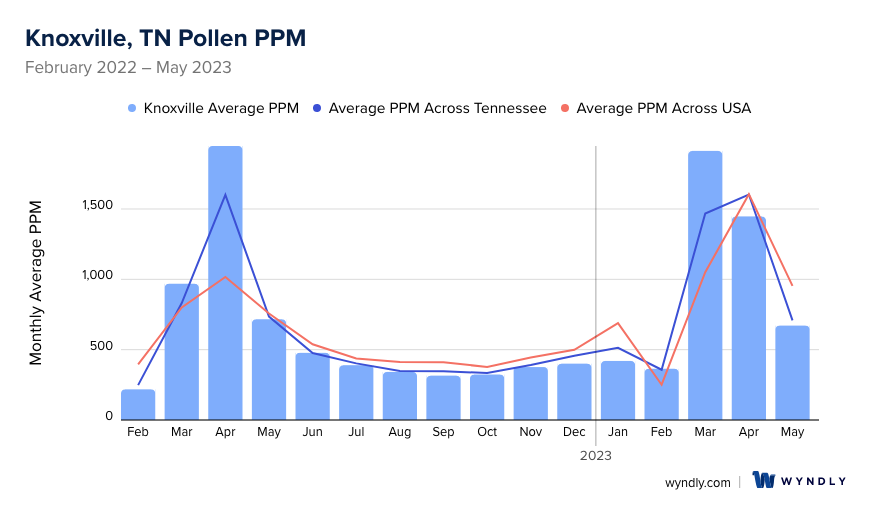
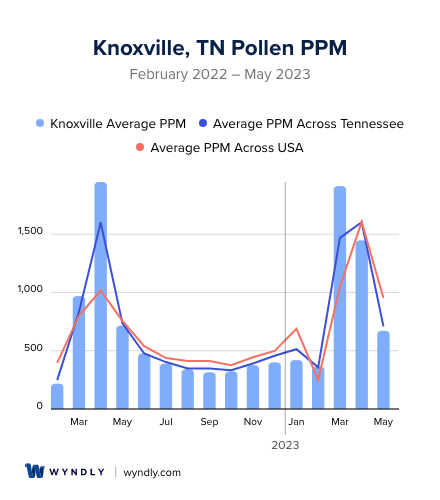
Knoxville, TN Pollen and Allergy Breakdown by Month
Grass
When is grass pollen highest in Knoxville, TN?
April has the highest grass pollen in Knoxville, TN with an average PPM of
When is grass pollen lowest in Knoxville, TN?
October has the lowest grass pollen in Knoxville, TN with an average PPM of
Tree
When is tree pollen highest in Knoxville, TN?
March has the highest tree pollen in Knoxville, TN with an average PPM of
When is tree pollen lowest in Knoxville, TN?
July has the lowest tree pollen in Knoxville, TN with an average PPM of
Weed
When is weed pollen highest in Knoxville, TN?
April has the highest weed pollen in Knoxville, TN with an average PPM of
When is weed pollen lowest in Knoxville, TN?
February has the lowest weed pollen in Knoxville, TN with an average PPM of
Knoxville, TN Pollen Monthly Breakdown by Pollen Type
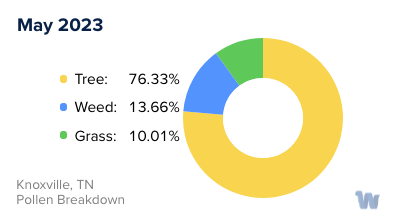
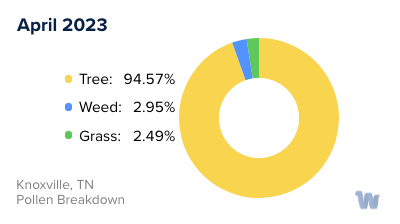
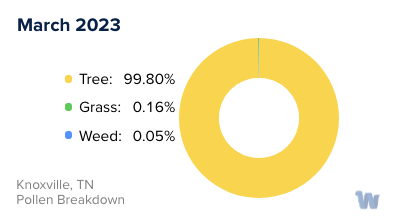
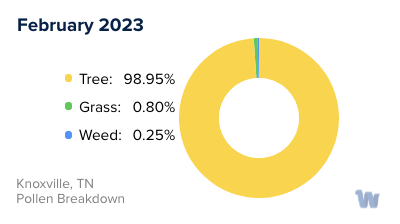
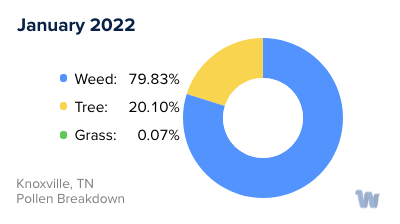
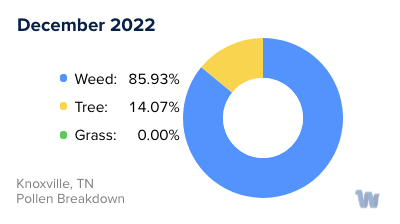
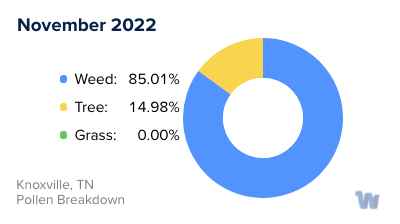
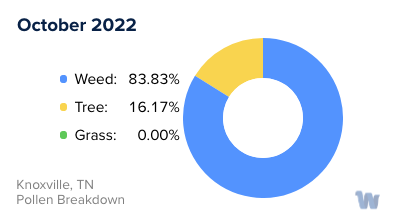
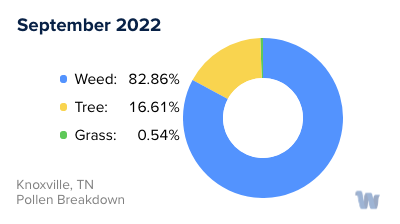
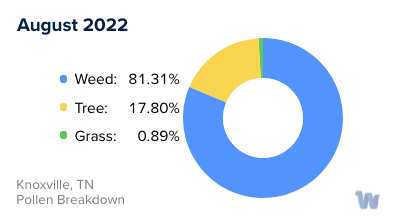
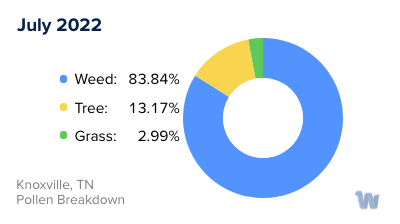
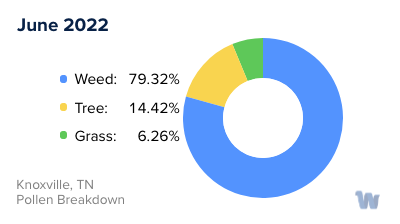
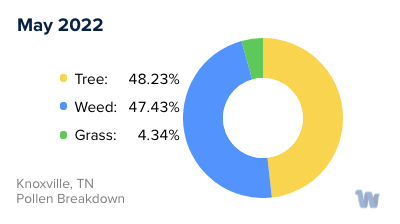
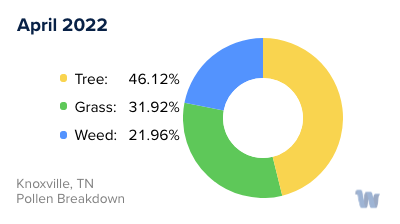
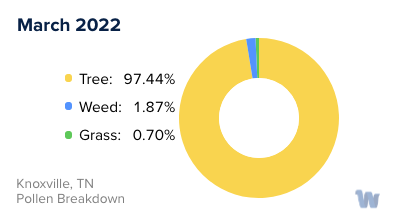
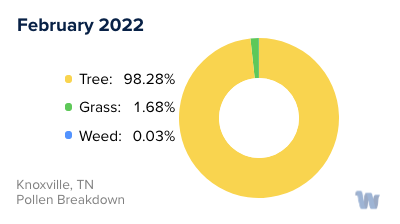
Pollen and Hay Fever in Knoxville, TN
Pollen allergies, commonly known as hay fever, are a familiar challenge for many residents of Knoxville, Tennessee. This condition results from an overreaction of the immune system to pollen, a fine powder released by plants for fertilization. In Knoxville, the primary culprits contributing to hay fever are trees, grasses, and weeds, each with their own distinct seasons of activity.
Trees are often the first to contribute to the pollen count, with their season typically starting in late winter and stretching into spring. In Knoxville, common tree pollens that trigger allergies are from oak, maple, and pine. These tree pollens are often detected in the air as early as February, with their levels peaking in April and tapering off by late spring.
As tree pollen season winds down, grass pollen season picks up. Grasses typically release their pollen in late spring and early summer. In our region, the most common types are Bermuda grass, fescue, and ryegrass. For those with sensitivities, grass pollen can make late spring and early summer particularly challenging.
By late summer and throughout the fall, weeds take center stage in the pollen production. Weeds like ragweed, sagebrush, and pigweed are widespread in Knoxville and are notorious for their high pollen production. Ragweed, in particular, is a significant cause of hay fever, with a single plant capable of producing up to a billion grains of pollen in a season.
While the specific timing of these pollen seasons can vary year to year based on weather conditions and other factors, a general understanding of this cycle can help Knoxville residents anticipate and navigate the challenges of hay fever. It's important to remember that pollen levels can fluctify throughout the day, often peaking in the early morning hours. Additionally, dry, windy days typically see higher pollen counts, as the wind easily carries these tiny grains through the air.
In conclusion, living in Knoxville means coexisting with a variety of pollens throughout the year. By understanding the types of pollen and their seasons, individuals can better anticipate the challenges of hay fever and take proactive steps to maintain their comfort and well-being.


